Pole :
The project is structured around a number of priority research themes at both national and international level. These include autonomous vehicles, all-electric and hybrid vehicles, the reliability and safety of transport systems, and the integration of fifth-generation roads as intelligent, connected and cooperative systems.
The power density of converters is continually increasing to meet growing needs in terms of power integration. This is made possible by the development of new wide-bandgap power component technologies such as silicon carbide (SiC) and gallium nitride (GaN). It is therefore essential to study the impact of these new-generation GaN and SiC components on the EMC and reliability of the power converters used in these applications.
This project is being developed in collaboration with Prof. Moncef Kadi's team in charge of the Electronics and Systems Department at IRSEEM, Rouen-France.
Leader:J. Ben Hadj Slama,
Members:Eloued Sonia,Mohamed Belghith, Ahmed Taleb Cheikhna
In this project, we are working on the automatic optimization of the typon layout in order to reduce conducted and radiated electromagnetic disturbances in the converter. An automatic coupling has been implemented between Simplorer software for fine electrical simulation, Ansys' Q3D software for calculating the electromagnetic coupling matrix between the various parts of the circuit, and Matlab for automatic layout generation and genetic algorithm optimization. The proposed methodology has been validated experimentally.
This project is being developed in collaboration with Prof. Christian Vollaire's team in charge of the electromagnetic compatibility (EMC) activity at the Ampère laboratory at the Ecole Cenrale de Lyon-France
responsible: J. Ben Hadj Slama,
Members: Hajji Omessaad, Belloumi Wided
Estimating the state of charge (SoC) of batteries in electric vehicles is essential to ensure safe and efficient operation. In this project, we are working on the development of state observer-based algorithms: Extended Kalman Filter (EKF) and Smoot Variable Struture Filter (SVSF). We have proposed a fuzzy logic technique for estimating battery parameters, taking into account the state of charge and ambient temperature. To achieve this, we have used a rich database collected from various battery charge and discharge tests under different ambient temperature conditions.
This project is developed in collaboration with Mr. Bilal Manai Professor at Cégep de l'Outaouais, Canada.
Team leader: Jemmali Sabeur
Team: Hamouda Mahmoud, M. ben Lazreg,
In this project, we calculated reachability between different points along the vehicle's path, using an accessibility analysis scheme as a reliable risk indicator. To do this, we used interval analysis to propagate the uncertainties influencing vehicle dynamics. This boils down to solving an ordinary differential equation with uncertain variables and parameters via an interval Taylor series expansion method. Depending on the bounds obtained for the achievable sets, a decision is made regarding navigation safety.
Once a risk of collision is detected, the risk management layer acts to update the control parameters to influence the location of the most likely reachable space, control the critical situation and guarantee good reachability, while avoiding any risk of the vehicle colliding with the forbidden zone. Several simulation results demonstrate the safety, efficiency and robustness of the proposed global navigation under uncertainty.
This project is being developed in collaboration with Professor Lounis Adouan of the Heudiasyc laboratory, Université de Technologie de Compiègne, Compiègne, France.
Manager: Nasri Othman
Team: Ben Hadj Slama Jaleleddine, Ben Lakhal Nadhir Mansour
In the first phase of this project, we opted for the integration of the double-fed asynchronous machine as the drive system. It should be noted that this type of motor is highly capable of operating at high speeds. On these machines, we are implementing non-linear and non-conventional control structures, essentially integrating control and observation of sliding-mode states of the system.
In a second step, we have introduced multi-stator asynchronous machines with the ability to segment the power developed by the drive systems. These machines, generally of high power, are used in marine propulsion and high-power systems. We have built a test bench for a three-star, nine-phase machine. The test bench consists essentially of the high-power part (nine-arm inverter) and its open-loop control. The closed-loop control is currently being finalized.
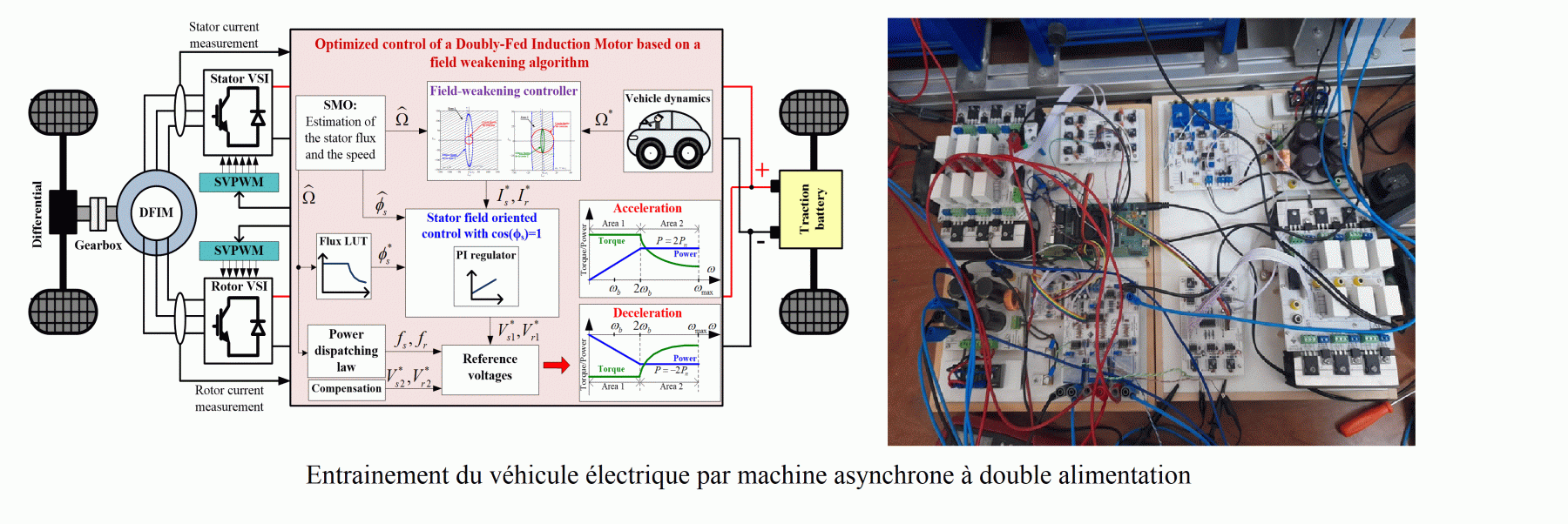
Vehicle drive by dual-powered asynchronous machine
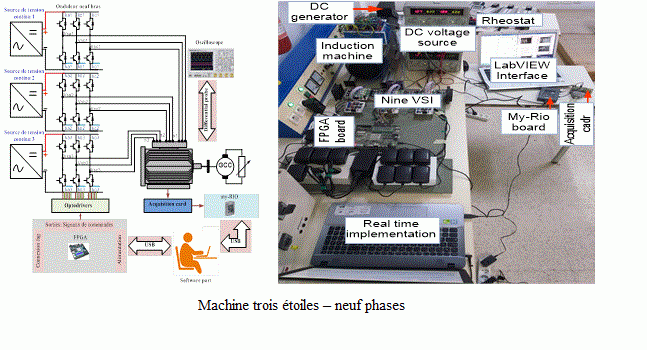
Three-star machine - nine phases
| Photo & Infos | Searcher | Grade | |
|---|---|---|---|

|
Ben Hadj Slama Jaleleddine | Professeur | |

|
Cheikhna Ahmed Taleb | Doctorant | |
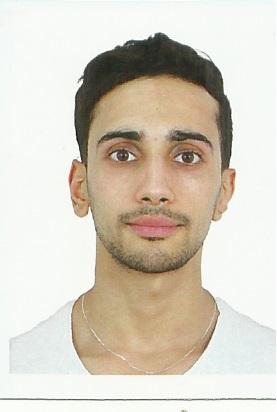
|
Mohamed Belghith | Doctorant | |

|
Abari Ibtissem | Post-Doc | |
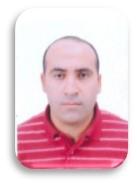
|
Belaid Mohamed Ali | Maitre de conférences | |
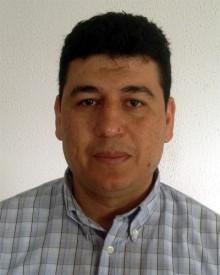
|
Hamouda Mahmoud | Professeur | |
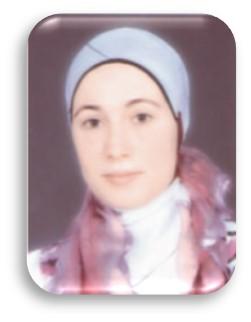
|
Ben Rhouma Asma | Maitre de conférences | |

|
Bouallegue Adel | Maître assistant | |
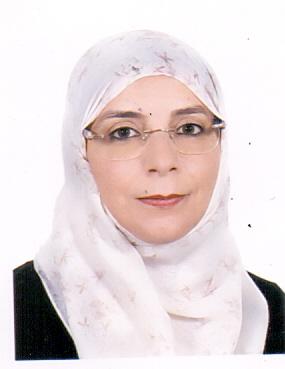
|
Eloued Sonia | Maître assistant | |

|
Faiçal Jellali | Maître assistant | |
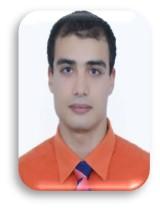
|
Mellouli Mohamed | post-Doc | |

|
Jnayah Salma | post-Doc | |

|
Latrach Fatma Zohra | Doctorant | |

|
Afi Sameh | Doctorant | |

|
Chraiti Mohamed | Doctorant | |

|
Mohamed Khayri Rahmani | Doctorant | |
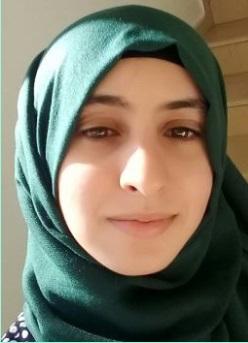
|
Khouili Nouha | Doctorant | |
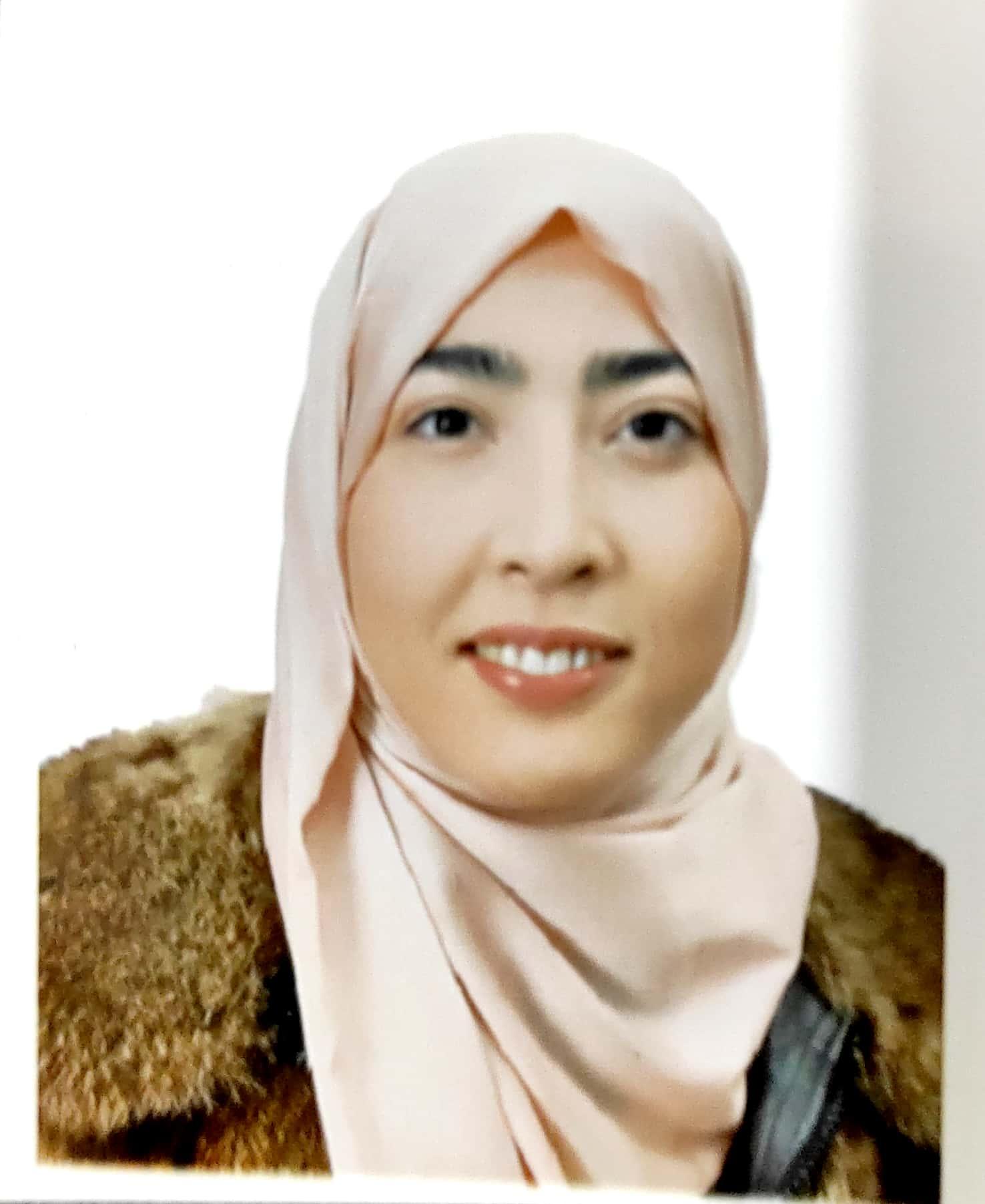
|
Gaaloul Yasmine | Doctorant |
This project meets a strong national need for the development of renewable energies and the Smart Grid. It is being set up in collaboration with Tunisian industrial partners. In Tunisia, as elsewhere in the world, photovoltaic (PV) solar energy is playing an increasingly important role in the production of electricity, thanks to its non-polluting nature and sustainability. By way of indication, total worldwide installed capacity in 2019 was estimated at 116.9 GW, with an increase of around 13% on the previous year. Tunisia enjoys a strategic geographical location that is highly favorable to the exploitation of this source, with daily sunshine levels of around 1,800 Wh/m²/day. The State's strategy in this energy field is to achieve a PV inverter installation capacity of around 30% of national electricity production. This increase in renewable resources will support the Tunisian power grid, especially during peak summer periods, when conventional power plants are no longer able to cope with the growing demand for electricity, thereby compromising the stability of the Tunisian power grid.
This research project is divided into several sub-projects:
The aim of this project is to improve the quality of injection of renewable electrical energy into the power grid. We have developed high-efficiency single-phase and three-phase converter structures, while reducing the electromagnetic disturbances generated by the converter, as well as leakage current. We have designed and built a three-phase current inverter that is more reliable than a voltage inverter, and can be connected to the grid at low DC bus voltages. So, in order to improve the efficiency of this PV converter, we studied the impact of using SiC components on converter losses. For this purpose, we adopted the double pulse test technique and PLECS software to evaluate the converter's efficiency.
This work was carried out in collaboration with Professor Kamal Al-Hadda Canada Research Chair in Energy Conversion and Power Electronics, ETS de Montreal, Canada.
Leader: Hamouda Mahmoud
Team: Ben Hadj Slama Jaleleddine, Boudhir Kraiem Sana, K. Ezzeddine
The aim of this project is to guarantee the permanent injection of renewable energy into the electrical grid, even when the latter presents disturbances such as voltage dips, harmonics and frequency variations.
We have developed techniques for fast, accurate extraction of fundamental components, unbalance and offset, even in the event of frequency jumps. This has been tested and validated under highly disturbed network voltage conditions. The results obtained in simulation and real-time emulation demonstrate the effectiveness of this approach in estimating, with high accuracy, the instantaneous parameters of the grid voltage without any steady-state ripple, and without the integration of adaptive filters.
This work is developed in collaboration with Professor Kamal Al-Haddad Canada Research Chair in Energy Conversion and Power Electronics, ETS de Montreal, QC, Canada.
Manager: Ben Hadj Slama Jaleleddine
Team: Hamouda Mahmoud, Mellouli Mohamed
The reliability of photovoltaic inverters is essential to guarantee continuity of service on the electricity grid. In this project, we are developing intelligent fault diagnosis methods for photovoltaic inverters, based on the analysis of the electromagnetic signature of these inverters, using advanced signal processing techniques. These methods will be extended in a second stage to prognosticate component ageing.
The proposed methodology was initially validated on a three-phase NPC inverter. The method was then adapted for application to other advanced structures, using various signal processing analyses. The proposed method is capable of detecting and isolating a single open switch fault in a five-level U-cell single-phase inverter (type PUC5).
Numerical and experimental validations have shown that the proposed method is robust to variations in load current and operating parameters.
With a view to using electromagnetic disturbances as a signature of power component ageing, we are implementing advanced signal processing techniques such as autocorrelation...
This work is developed in collaboration with Professor Kamal Al-Haddad Canada Research Chair in Energy Conversion and Power Electronics, ETS de Montreal, QC, Canada.
Manager: Ben Hadj Slama Jaleleddine
Team:Hamouda Mahmoud, Abari Ibtissem, Ahmed Taleb Cheikhna
| Photo & Infos | Searcher | Grade | |
|---|---|---|---|

|
Khedher Adel | Professeur | |

|
Moussa Soussi Intissar | Maître assistant | |
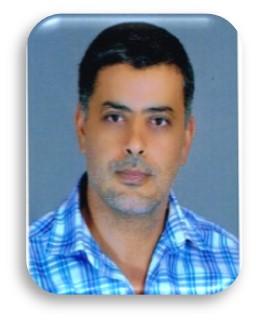
|
Ben Smida Khaled | Maître assistant | |

|
Zaidi Noureddaher | Maître assistant | |

|
Kalti Karim | Maître assistant | |
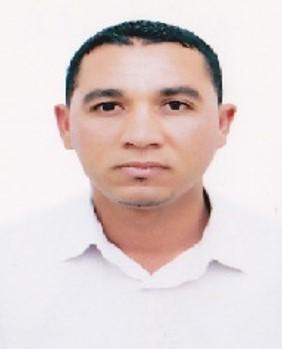
|
Mahmoud Imed | Maître assistant | |
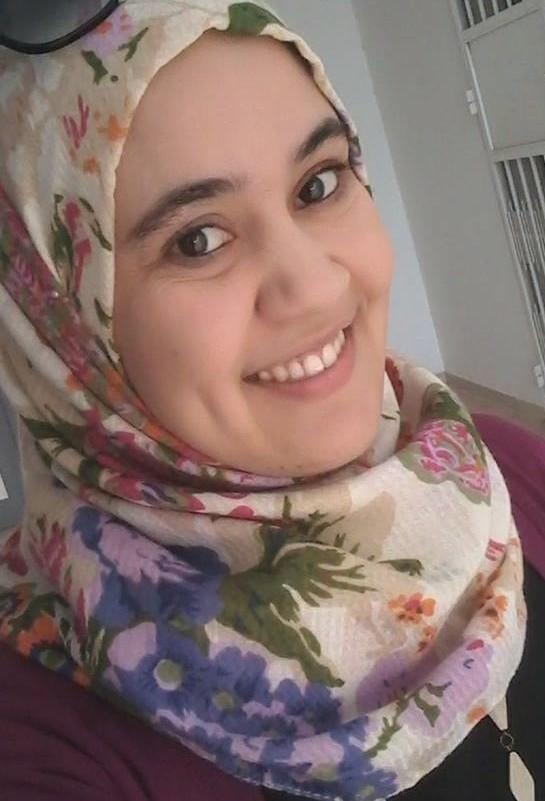
|
Essallah Sirine | Maître assistant | |

|
Bouyahi Henda | Post-Doc | |

|
Ben Mahmoud Zouhaira | Post-Doc | |

|
Zerzeri Mouna | Post-Doc | |

|
Guenenna Thouraya | post-Doc | |

|
Hélali Hiba | post-Doc | |

|
Amri Akram | Doctorant | |

|
Soltani Khouloud | Doctorant | |

|
Jaafar Roua | Doctorant | |

|
Lassoued Ali | Doctorant | |

|
Naimi Wiem | Doctorant | |

|
Bannour Sahbi | Doctorant | |
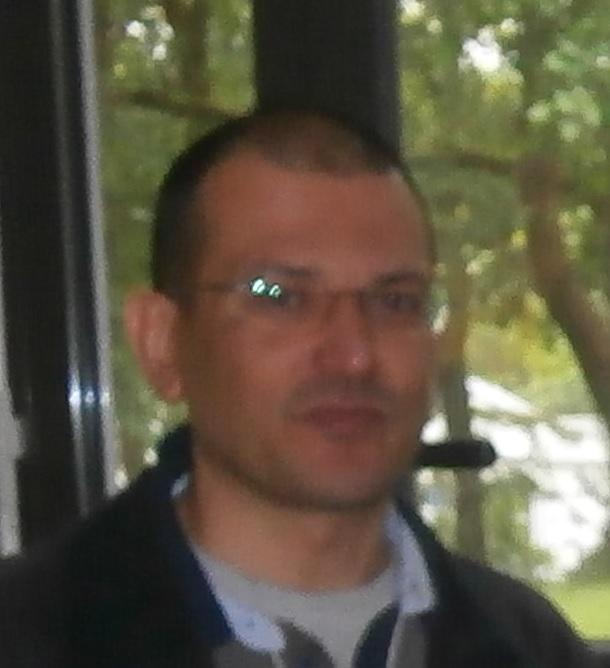
|
Elhedda Walid | Maître technologue | |

|
Alothman Hasanien Ali Taleb | Doctorant | |

|
Khedher Atef | Maitre de conférences | |
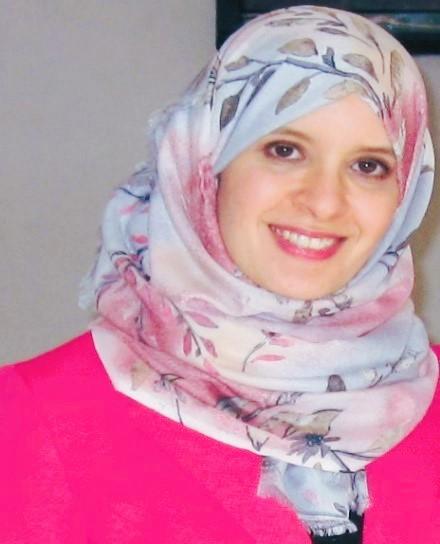
|
Mlayeh Hajer | Maitre Assistant | |

|
Dhahri Mohamed | Doctorant | |
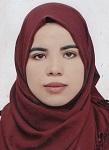
|
Mallat Mariem | Doctorant | |
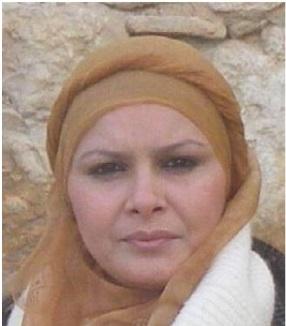
|
Kouki Hajer | Maître assistant | |

|
Akkari Hanen | Maître assistant |
Project: Artificial Intelligence and Computer Vision (AICV)
The aim of this project is to propose and develop intelligent algorithms for interpreting the visual world, using techniques such as pattern recognition, deep learning and image processing to improve the performance of computer vision tasks, particularly in terms of accuracy, speed and robustness. This will be applied to various domains such as facial recognition, pedestrian detection, autonomous navigation, safety monitoring, augmented reality, etc. In addition, this project aims to support the national strategy for the introduction of systems to control and secure both individuals and spaces requiring surveillance (airports, supermarkets, government structures, etc.). Particular interest is planned in the development of intelligent embedded solutions for access control, based on biometric technologies such as face and fingerprint.
The aim is to develop approaches for the identification/authentication of individuals using biometric measurements, based on new artificial intelligence (AI) and deep learning (DL) technologies. These approaches are relevant to applications such as securing access to protected infrastructures, and combating fraud, crime and terrorism.
The aim is to develop a platform for collecting/managing/storing digital data (images, audio, video) from public or private databases, under open or regulated license, or acquired from the sensors and cameras we have at our disposal. These data, which are essential to our studies, are constantly increasing in volume, on the order of Big Data, and changing in characteristics (size, resolution, modality), requiring a platform to facilitate their exploration/exploitation. It's a question of giving concrete form to the approaches developed in the form of hardware and software tools. These tools are the building blocks of embedded platforms and systems with real-time solutions for acquisition, analysis, object tracking, action recognition and decision-making.
When used in medicine, many augmented reality systems only consider a rigid registration of the preoperative model, and therefore do not take deformations into account. This reduces the credibility of augmented reality. In fact, the patient's position changes between the acquisition of the preoperative image and during the operation, when the table is often tilted to allow the abdominal viscera to slide to the bottom of the abdominal cavity to facilitate access to the organs. Heartbeats can also cause displacement. Also, the instruments will move and deform the organs, requiring new methods based on augmented reality to visualize these organ deformations during the operation. Various methods have been proposed to achieve satisfactory results, non-rigidly realigning the preoperative model with an intraoperative surface of the target organ. Unfortunately, these methods are unable to achieve good overall accuracy. The aim of this project is to explore new techniques.
Although these technologies hold great promise for improving our current mobility habits and reducing the number of road accidents, there are still serious safety challenges to be addressed by Intelligent Transport Systems (ITS). In fact, although on-board intelligence in the automotive field has produced impressive results, particularly for environmental perception, these systems remain unable to overcome complex traffic situations. A real-time collaborative perception scheme in which vehicles no longer limit themselves to data acquired by their own on-board sensors, but exploit data from remote sensors, is needed for reliable perception of the environment. Vehicles are no longer seen as isolated systems controlled solely by their drivers, but rather as intelligent nodes distributed within a complex interconnected system. With vehicular wireless communication, ITS applications are supported by several high-performance communication technologies such as ITS-G5 and 5G. As a result, vehicles can interact actively and in a participative way using in-vehicle units and roadside units. In this project, we are targeting aspects such as pedestrian detection, multi-object detection and recognition of driver distraction actions.
The aim is to develop feature extraction approaches for the recognition of hand gestures with a jumping motion. Indeed, over the last few decades, hand gesture recognition (HGR) has become one of the most important research topics, due to its wide range of applications in computer vision. Various approaches and techniques have been suggested and evaluated to achieve significant results on HGR. However, even with the triumph achieved over state-of-the-art methods, they failed to take into account the non-linearity and non-stationarity existing on time series data, including raw Leap Motion Controller (LMC) data. In this research work, we propose a new method for extracting and selecting relevant and discriminating features using the Hilbert Huang transform (HHT) and Fisher discriminant analysis. Accordingly, CML time series signals are decomposed by an empirical mode decomposition. Next, HHT is applied to generate the resulting Hilbert marginal spectrum, and Fisher discriminant analysis is also performed for efficient feature selection.
The idea for this project is based on one observation: the imbalance between demand and production of electrical energy is growing exponentially, and available resources are being depleted at an alarming rate. At the same time, the customer's role remains passive in the face of this challenge. It is therefore necessary for the customer to participate in this system as a consumer-actor. The aim of this project is to develop predictive algorithms based on Artificial Intelligence and its application to the energy optimization of Smart Grids (SG).
This innovative research project focuses on signal reconstruction using new multi-wavelet-based approaches. By exploring advanced filters and algorithms, this research aims to improve the ability to reconstruct complex signals, with an emphasis on their application in the biomedical field. In particular, the study focuses on the analysis of electrocardiographic (ECG) signals, which are essential for the early detection of heart disease. In addition, the project extends to investigate signals associated with the coronavirus pandemic, notably in the context of medical data collected from COVID-19 patients. The expected results of this research will offer a deeper understanding of signal reconstruction, paving the way for better methods of detecting cardiac abnormalities, as well as providing essential insights into understanding variations in complex biomedical signals and their correlation with coronavirus cases.
| Photo & Infos | Searcher | Grade | |
|---|---|---|---|

|
Ben Khalifa Anouar | Maitre de conférences | |
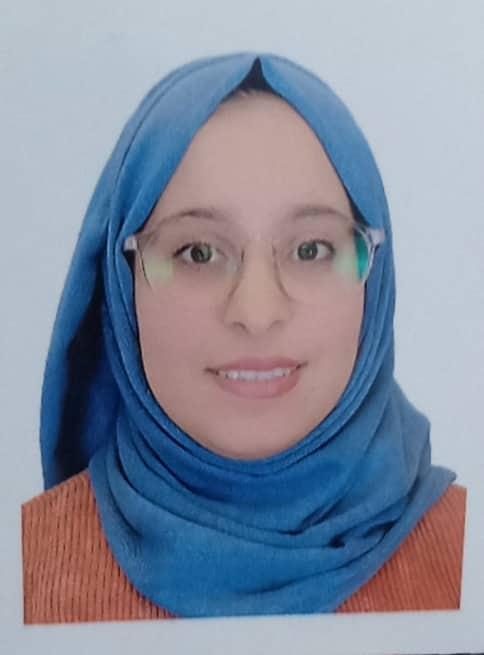
|
Ben Said Afef | Doctorant | |
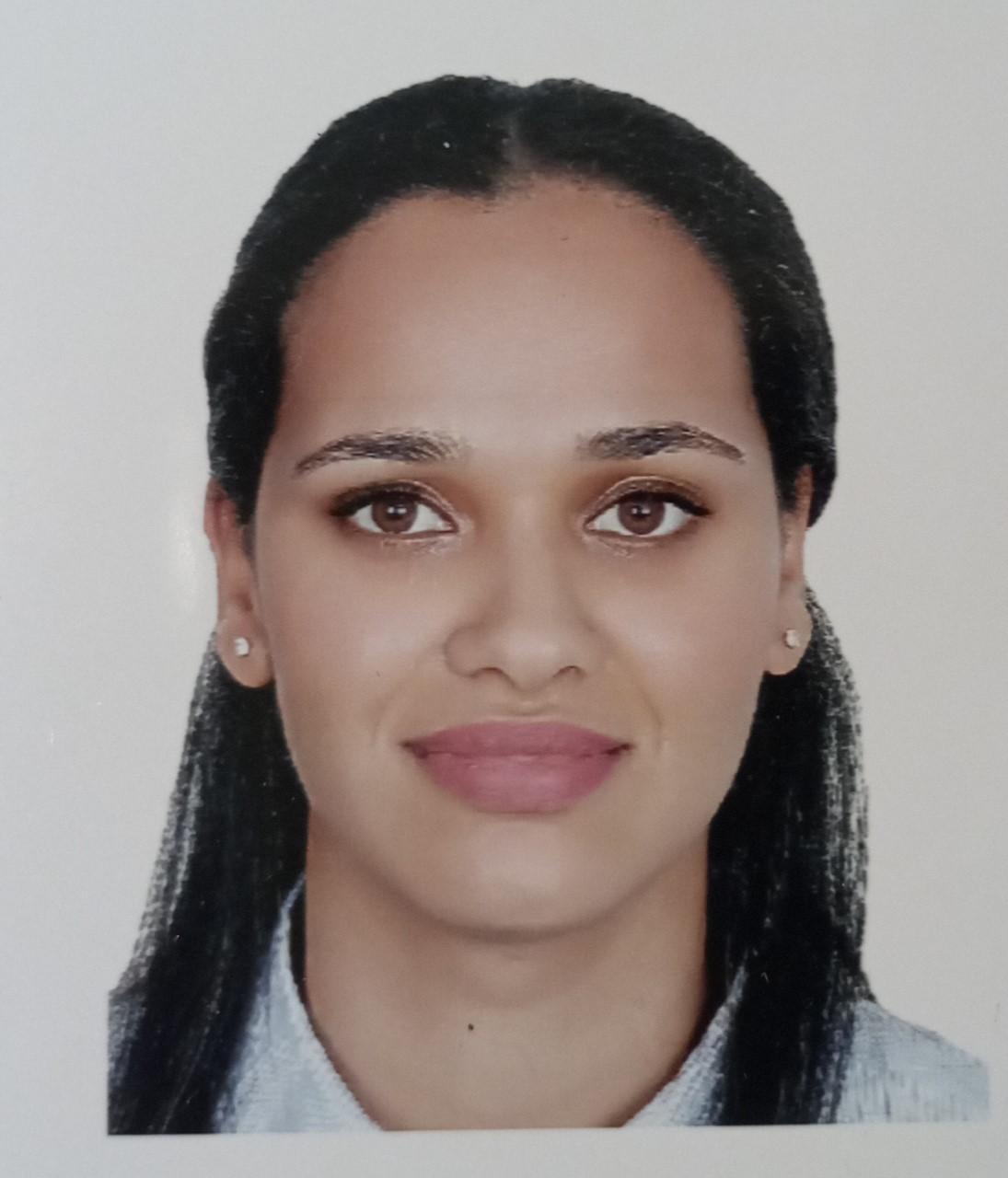
|
Ben Rouighi Ines | Doctorant | |
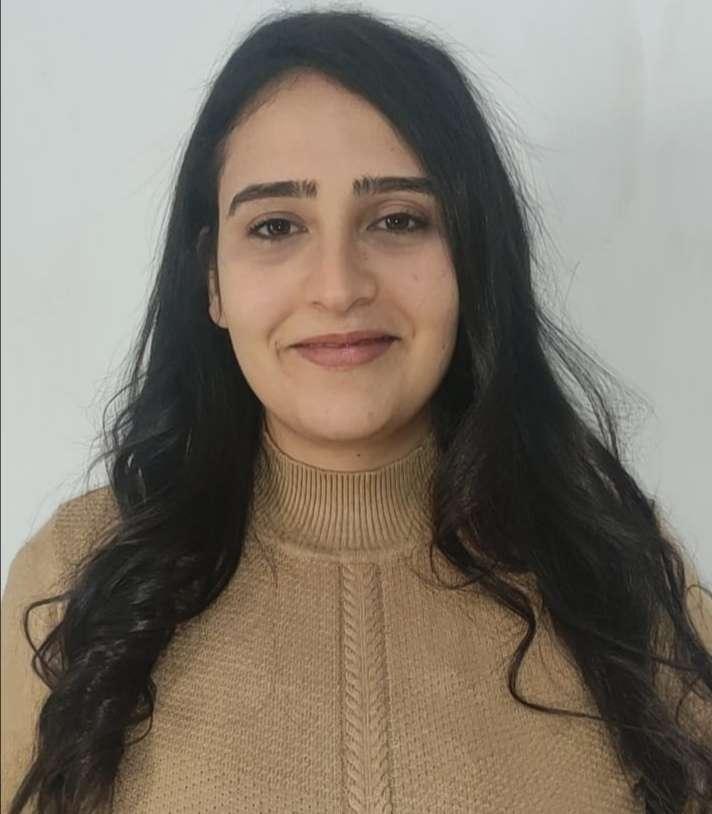
|
Younis Amen | Doctorant |
Document Analysis and Processing (DAP)
Initiated over 25 years ago, this research project focuses on the proposal and development of algorithms for extracting information from digital documents, such as texts, images and videos. The main objective is to develop document analysis techniques that can be applied to a wide range of fields, such as finance, law, medicine, archiving, education, among others. Particular attention is given to images from ancient and medical documents. The research themes of this project represent a continuation of the work already launched since the creation of the laboratory. To this end, we will continue to use natural language processing (NLP), optical character recognition (OCR) and computer vision techniques to extract relevant information from various types of documents. We will also explore machine learning and deep learning techniques to improve algorithm accuracy and the ability to adapt to new or unknown documents. In addition, high priority has been given to the development of fast, accurate and robust approaches for the automatic image analysis of archival documents (AIDA), and more specifically to the analysis of their structure or layout, transcription and indexing.
Word retrieval is an important task for understanding and exploiting document content by creating indexes. It is an information retrieval technique that aims to identify all occurrences of a query word in a set of documents (e.g., a book). In the word retrieval task, the input is a set of non-indexed documents and the output is a list of words ranked according to their similarity to the query word. This enables quick and easy online access to cultural heritage documents, and opens up further possibilities for studying these resources. In this project, we aim to improve word retrieval performance by developing a generative conditional model based on an adversarial network to generate clean document images from highly degraded images. This enhancement model deals with various degradation tasks such as watermarking and chemical degradation, with the aim of producing hyper-clean document images and fine detail retrieval performance.
Transcribing archival documents, particularly Arabic manuscripts, has remained a tedious and costly task for many years (often carried out manually by administrative staff or archivists). Three major contributions are included in this project. The first is a new method based on a deep UNet architecture adapted to identify the central part of each line of text. The second contribution concerns the proposal of a method based on a deep encoder-decoder architecture. The encoder consists mainly of five octave layers. The decoder consists of a succession of five layers of recurrent neural networks preceded by a layer integrating the deep self-attention mechanism. The third method is based on a deep encoder-decoder architecture, the encoder part of which is mainly based on the fusion of the skip connection technique and the gated mechanism.
The aim of this project is to extract information from visually rich documents (VRDs) using Graph Neural Networks (GNNs). RNGs were chosen because they excel at capturing relationships and dependencies between different components. This is particularly useful for DVRs, where components such as text units and encompassing frames have complex relationships. To this end, a first model has been proposed based on a node classification approach for extracting information from visually rich documents (VRDs) using a graph-based representation. The approach uses a weighted graph representation of VRDs, where node features are based on spatial, textural and visual characteristics extracted from the VRD, and node neighbors are chosen based on a customized edge weight. The document graph is then fed into a multi-layer graph convolutional network (GCN) for node classification, which is able to efficiently focus on important neighboring nodes.
In this project, we propose to study adversarial attacks in situations relevant to real-world contexts by examining both sides of the issue: the ways in which an adversary can attack an implementation of a deep neural network, such as the sensors in an autonomous vehicle, and the ways in which these sensors can be hardened against adversarial attacks to ensure a reliable outcome. Recent implementations of machine learning-based applications tend to use multi-view and multi-modal data to accomplish their task, as single-view detectors show their limitations, particularly in the face of challenges such as occlusions. However, the majority of research on adversarial attacks focuses on single-view detectors, and adversarial attacks in a multi-view context remain a relatively understudied topic. One of the first aims of our work was to carry out an exploratory study into the transferability of patch-based adversarial attacks to different views of the same scene. This study showed that view angles have a significant effect on the performance of adversarial attacks, which has an impact on our objective: to propose an attack that can target a multi-view object detector. Initial findings show that for an adversarial attack to succeed, the attacker must simultaneously target multiple views. This multi-view adversarial attack will enable us to gain insight into the vulnerabilities specific to a multi-view context, leading us to our next objective: the implementation of an adversarial defense guaranteeing a highly robust deep neural network.
Atlas-based segmentation is a high-level segmentation technique that has become a standard paradigm for exploiting a priori knowledge in image segmentation. Different regions of the human body detected on medical imaging such as the brain or the female pelvic region, for example, are known to be anatomically complex and of high variability from patient to patient, making the task of segmentation using low-level segmentation techniques difficult. An atlas-based automatic segmentation approach using online learning has been developed. It was first applied to the segmentation of the human cerebellum from 2D brain MRI images. In a second step, the approach was applied to the segmentation of local regions likely to be affected by cervical cancer from 3D female pelvic MRI images. The proposed segmentation approach is based on a novel registration technique that uses a hybrid optimization procedure based on a particular genetic algorithm design combined with gradient descent in a multi-resolution strategy. The atlases used in this work were made available to us progressively in sequential order. The proposed approach is therefore based on an on-line machine learning method for the construction of the atlas base and for the segmentation process.
The aim is to develop a digital model of the thorax, with the necessary meshing and simulation of the electrical impedance tomography (EIT) system on which image reconstruction is based. EIT scans the organ by passing an electrical current through the body, detecting it on the skin with an electrode belt and generating electrical impedance measurements. TIE is used to detect lung infections, breast cancer, etc., and is a non-invasive type of medical imaging. TIE for lung monitoring is based on the repeated measurement of surface voltages resulting from a rotating injection of high-frequency, low-intensity alternating current flowing between electrodes located around the chest. During monitoring, cyclic injections of electrical currents are performed sequentially, usually between all pairs of adjacent electrodes. Structural information from the human chest reflects the actual shape of the lungs and thorax. Several mesh sizes have been studied, leading to a specific number of nodes and elements in the mesh. The choice of the best mesh size was based on the smooth contour of the lung that was obtained. This method was used to study conductivity distribution within a section of the human thorax by varying the current injection pattern.
The main aim of the work carried out in this project is to implement a histological image analysis system capable of meeting all the constraints and difficulties of analyzing this type of large scene in the field of medicine. The approach, based on incremental phenotyping, will make it possible to analyze a WSI image and then obtain precise, targeted information. The system to be developed will support clinicians in the analysis and diagnosis of histological images. The system will assist medical experts in the morphological recognition of different cell types, enabling quantification and morphometric analysis (e.g. dimensions, circularity, texture, etc.) from digitized histopathology slides, with the aim of obtaining reliable quantitative data enabling correlation studies with the various issues raised by clinicians (diagnostic, prognostic and predictive). The aim of the project is to propose a system to assist clinicians in the analysis and diagnosis of histological images. This system will be integrated as an essential assistant in the automated professional workflows handled by clinicians.
| Photo & Infos | Searcher | Grade | |
|---|---|---|---|
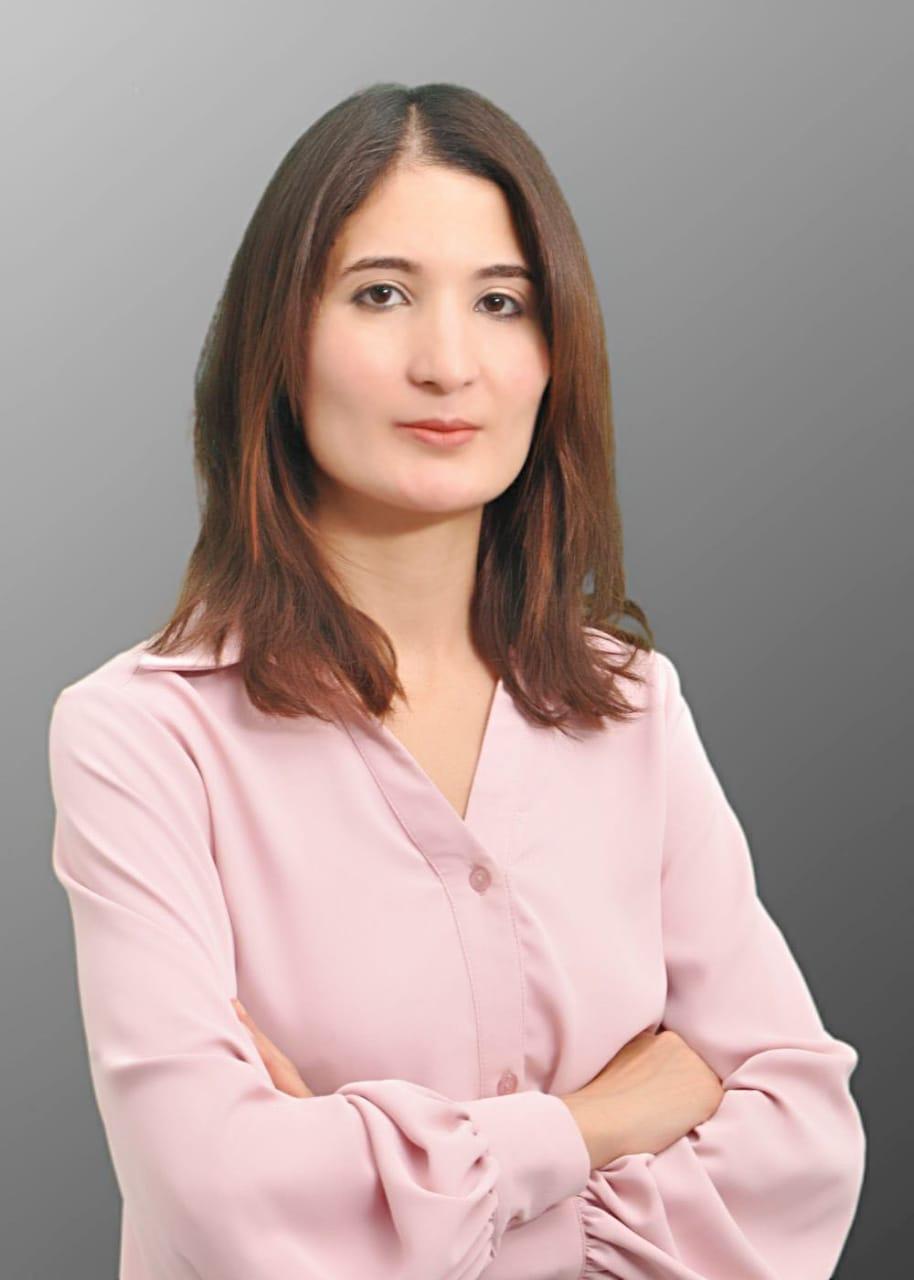
|
Arbi Mariem | Doctorant |

